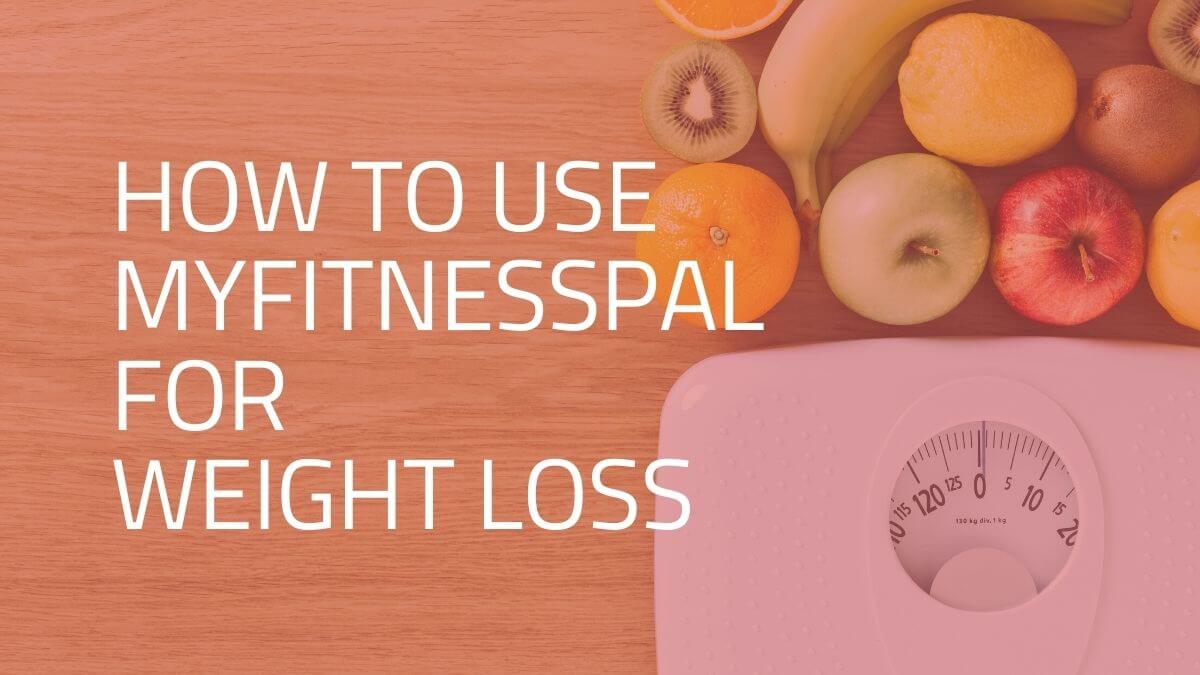How to Use Myfitnesspal for Weight Loss
Learn how to customize goals in Myfitnesspal for weight loss and accountability.

Hello, this is Jessica Lee Reader with Vitalized Body and I am so excited about this Myfitnesspal tutorial. I will show you how to customize your settings in MyFitnessPal to assist you in your weight loss journey. This is perfect because MyFitnessPal helps you to stay accountable and aware of what you’re consuming and what you’re eating daily. I will walk you through the steps.
The first step is to create your account.
I recommend starting with a free account and you can always upgrade later if the ads bother you.
Enter Your:
- Weight
- Height
- Goal Weight
- Gender
- Date of birth
- Username – Maybe something like “Yougotthis!”
- Daily activity level – Read through the options and see which fits you best.
How many times a week you plan on exercising?
I recommend aiming to exercise four times per week and at least 30-minutes. If you can get up to 5 or 6 times per week at 30 minutes that great! Even if it’s a walk, that’s great! You definitely want to incorporate some daily movement into your weight loss journey if it’s possible.
Next, enter your weekly weight loss goal.
I consider 2 pounds per week as natural sustainable weight loss. I want you to strive to lose 1 to 2 pounds per week until you hit your ideal weight.
Next, you can click sign up. You can uncheck the “News” box if you don’t want to receive the news. The news is helpful, so you can keep that checked if you’d like. You can enter addresses if you want to tell your friends about MyfitnessPal.
The next screen will provide suggestions for you to get started. These are brilliant suggestions, but I will explain how you can hone in more on custom goal setting.
Go to your Home, then visit the Goals tab.
MyFitnessPal will have generated settings. Let’s modify your goals now. You can just go into each setting and change them individually.
View My Myfitnesspal Tutorial Below.
Calorie settings
You want to avoid eating too little and then overeating later in the day.
- For Women:
1200 daily calories for weight loss may be okay if you’re sedentary. If you’re active, then I recommend increasing your calories to 1400 or even 1500 depending on your activity level. If you go lower than 1200 calories, your body might store fat. Our bodies are intelligent. We want to avoid storing fat, so perhaps you would err on the side and enter higher than 1200 calories. That way, if you end up eating over 1200 calories, that’s fine. If you dip below 1200 calories, you might also end up overeating because you’re hungry.Setting your calorie somewhere between 1200 and 1500 calories may work well. If you’re extremely active you may need more. - For Men:
Depending on your activity level, I usually will recommend anywhere between maybe 1600 and 1900 calories per day for weight loss. If you’re super active (like if you’re doing 14’ers) then you will need more calories, and that’s okay. Let’s say that you have mainly a sedentary life, then 1600 calories may work well. If you’re going to the gym or exercising a few times a week, then you might increase it to 1800 or 1900 calories. Setting your calorie somewhere between 1600 and 1900 calories may work well. If you’re extremely active you may need more.
Macronutrient Settings
Carbs
I have found that when we think of carbs, we’re often thinking of grains. What I want you to think of is complex carbs that include antioxidants and fiber to help support blood sugar levels.
50% complex carbs is okay for natural weight loss. You can aim to consume primarily vegetables, beans, fruit in moderation, and minimal whole grains (quinoa, brown rice, steel-cut oats). A general guideline is to consume only one serving per day of complex carbs if needed. If you’re active adding in another serving of complex carbs for a quick burst of energy may be beneficial.
I work with more of a lifestyle than a crash diet. If you take grains completely out of your diet and you can never have them again, you’re setting yourself up to fall off the health wagon.
Fats and Protein
On average, your goal is to consume half your body weight in grams of protein per day. Protein is not stored for later use. It’s broken down every day, and it needs to be replaced. Whereas fat and carbs are stored for later use. Protein needs to be replaced daily. I’m a huge advocate of plant-based protein powders as an easy way to fill up on healthy protein. Nuts, seeds, beans, and of course animal sources of meat work well too.
You should also incorporate healthy fats into your diet. Fats can include nuts, seeds, avocado, coconut oil, olive oil, and salmon.
Both protein and healthy fat assist weight loss by supporting your blood sugar levels and keeping you fuller longer.
You can set your fats to 25% and proteins to 25%. You might want the protein just a little higher and can kind of experiment with if you feel better with even ratios, or 30% fats and 25% protein, or 25% protein and 30% fats. Honestly, it is not too much of a difference; I suggest a 50 carbs/25 fat/25 protein ratio to keep it simple.
Saturated Fat, Polyunsaturated Fat, Monounsaturated Fat
You can divide your fat ratio into three to break down the healthy fats.
Trans fats shouldn’t be in your diet at all.
The FDA is in route of removing them from the American diet. Reading a label Trans Fats you can identify them as “Partially Hydrogenated” or “Hydrogenated”. If you see those ingredients on the back of a food label, put it back away and find something different. Trans fats can raise your LDL (bad cholesterol) and that’s one thing that we definitely want to avoid.
Cholesterol
I like to keep this right around the same recommendations as MyFitnessPal.
Sodium
I recommend decreasing the sodium level to half (1640 mg). The reason is that if you go a little over on your sodium (if it’s set up at 1640 mg) that’s okay, but if it’s at 3,000 mg then it can be a problem if you go over. Consuming a lot of sodium and salt in your diet could cause water retention and a plethora of issues. You really want to keep the sodium at bay, so instead of using salt on every meal try spicing up your food or adding flavor with lemon juice, garlic powder, coconut amines, apple cider vinegar, black pepper, curry, etc.
When you look your sodium you’ll see it will trickle in things like artificial foods, processed foods, and packaged foods. Even whole foods can contain natural sodium. Keeping your eye on sodium is imperative.
Potassium
I just leave this as is at 3,500 mg, which is a wonderful goal for potassium.
Fiber
Fiber is filling, which is great for weight loss! Fiber is good at 25 grams, but if you want to move this up to 30 grams, then that’s exceptional. A higher fiber goal can help with your digestion, cholesterol, and blood sugar consistency.
Fiber is found in leafy green vegetables, fruit, and beans.
Sugars
Sugars are the most important thing that you’ll want to change in the settings. The settings are usually insanely high for sugars. The American Heart Association recommends for women are only 24 grams of total sugars per day. For weight loss, I recommend only 24 grams of TOTAL sugar per day.
- Natural sugars are found in vegetables, fruits, and dairy.
- Added sugar is found in anything else – Honey, molasses, maple syrup cane sugar, brown rice syrup – (so many things!) this is not helping your weight loss journey.
So change the sugars to 24 grams if you’re female, and if you’re male 36 grams of total sugar.
Vitamin A, C, Calcium, and Iron
You can keep the settings at 100% Daily Value (DV). That is great!
Next up, you can set a calorie goal for each meal.
You’re more than welcome to kind of divvy this up among your three meals and two snacks, so you have a guideline. I recommend eating around the same range of calories for your meals and snacks. If your caloric goal is 1,400 calories, then your goal is to consume around 350 calories at your three meals and around 175 calories for your two snacks.
Enter your food
It is relatively easy to enter your food and build up your database. There are a lot of consumer brands in the system. As you enter your food for the day, you can see where your ratios are and what areas you can improve on.
My best advice is to use this as an educational tool and instead of beating yourself up if you’re over or under in certain areas, just note what you will to improve the next day.
You can look at reports and use them as guides to set new goals for the following week. My suggestion is to go through a full week of logging, then look at your weekly report and make changes.
Tracking Fitness
Believe it or not, I do not recommend linking MyFitnessPal to tracking apps for weight loss. You want to look solely at nutrient intake and take a good hard look at how to improve your nutrition.
I know the program is meant for fitness and I recommend exercise, but as far as tracking your fitness I do not recommend it. In terms of weight loss, MyFitnessPal takes into consideration how many calories and nutrients you burn during a workout, and then adds that amount back into your nutrient stores. So let’s say that you practiced yoga for an hour, it says that you can consume more sugars, fats, protein, etc. The reason you’re practicing yoga or exercising isn’t so you can eat more, it’s so you can feel better.
You can always add your fitness in later if you’d like, but to start I recommend keeping it simple and not entering it.
Tracking Supplements
I recommend solely tracking nutrients. When you add in your supplements, it takes away from what your actual diet is deficient in.
In your natural weight loss journey, you need to start somewhere.
MyFitnessPal is my favorite recommendation to begin the quest. I hope that you found this tutorial helpful. You can ask me questions. I am here to help if you want more information on My Fitness Pal. I am happy to create more tutorials too.
Thank you so much Vitalize Your Day!
Please note these are general recommendations. For help with customizing your settings for your unique needs, please schedule a 15-minute phone or video consultation with me.
Stay Connected
